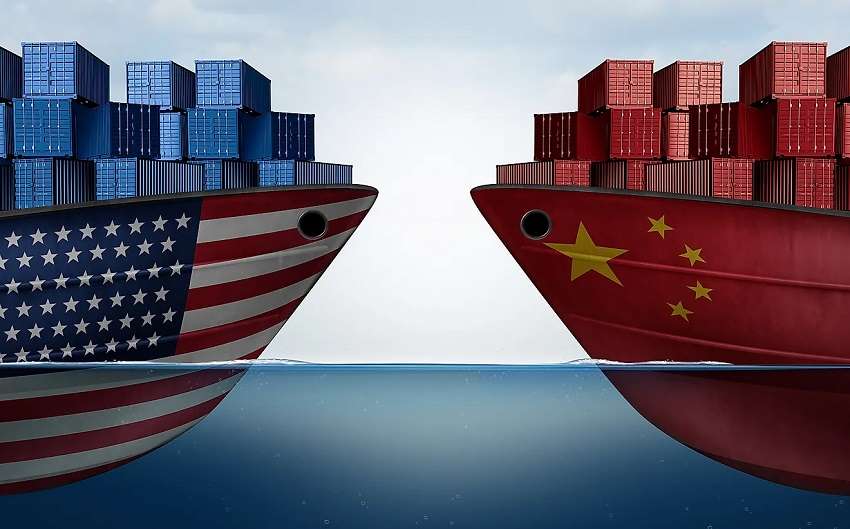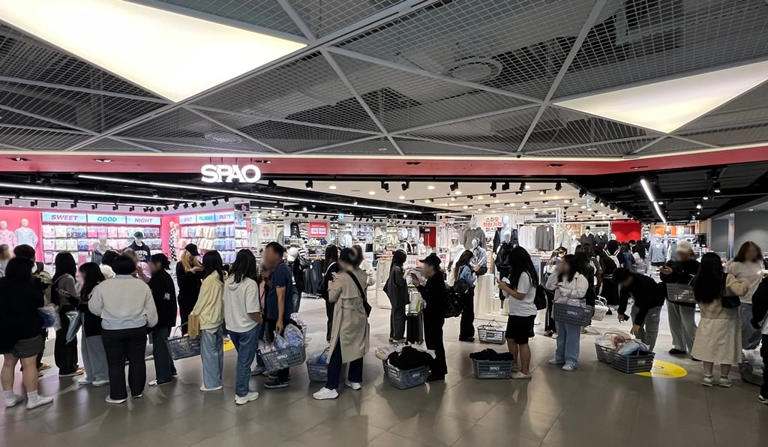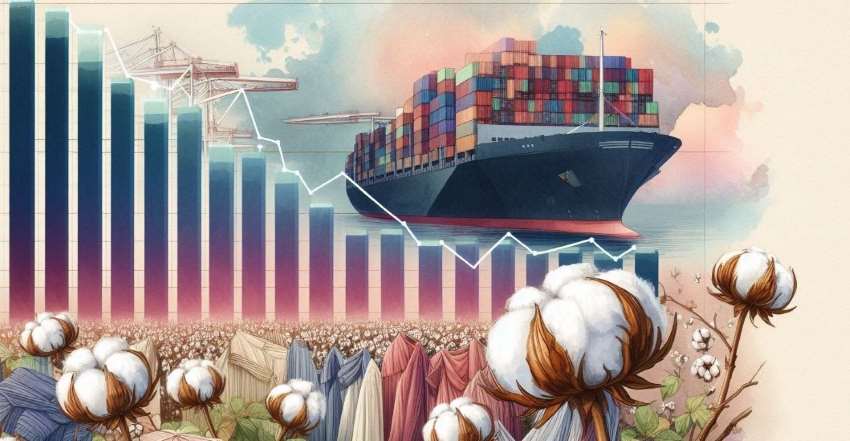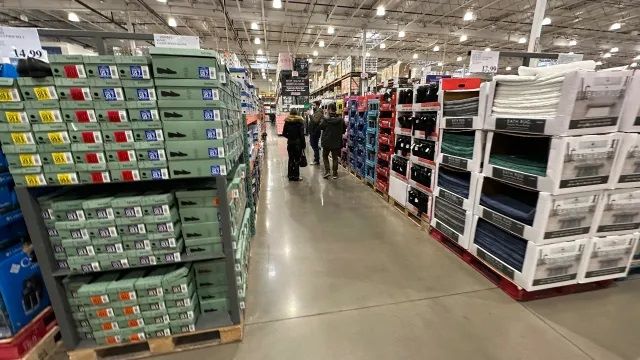FW
World Textile Summit
13 November 2015 -The World Textile Summit (WTS) 2015 will bring together the world's most influential textile business leaders to explore business responses to the international drive for sustainable manufacturing. Hosting the summit is Nadine Dereza – an award-winning journalist. Illustrious speakers include:Franke Henke, Global Vice President of Social &Environtment Affairs, adidas Group,Linda Keppinger, Global Materials Director, Nike Inc., and Roger Yeh, President, Everest Textile Co Ltd.WTS 2015 is organised by CEMATEX, MP Expositions and World Textile Information Network.
Textile Colourant and Chemical Leaders Forum
14 November 2015- Launched at ITMA 2011, the forum was an industry initiative that drew lively participation from dyestuff, colour and chemical professionals from around the world. This year’s forum focuses on sustainable manufacturing vis-à-vis colourants and chemicals. The agenda will addresstopics related to chemical pollution and the environmental issues and how these impact the market place, the response of supply chain; andthe trends and/or game changers moving forward.
Nonwovens Forum at ITMA
16 November 2015- Jointly organised by EDANA, the international association for the nonwovens and related Industries and MP, the forum features topics relating to applications and technologies, as well as added value ingredients and finishing for nonwovens. Jacques Prigneaux, Market Analysis and Economic Affairs Director at EDANA, will also touch on production figures, trends and forecast, and international trade dynamics for the nonwovens sector.
Bangladesh wants to develop its silk industry. The traditional silk industry has lagged behind economically and market is limited. Original silk has been replaced by synthetic duplicates. Bangladesh imports 486 tons of silk mostly from China every year as the local production of raw silk is only 24 metric tons against the demand of 510 tons. Local production of silk meets only 4.7 per cent of the domestic demand.
The country also wants to encourage production of quality silk for export. The main constraints of the silk sector in Bangladesh are a shortage of local mulberry production, obsolete technology, poor advertising, inadequate capital and insufficient governmental facilities. The sericulture industry in the country has largely become stagnant. Silk production declined dramatically over 1995 due to an increase in VAT on imported silk, followed by devastating floods in 1998.
Mulberry leaf is the food on which the silkworm lives. Production of raw silk is directly dependent on the production of this leaf. In Bangladesh mulberry plantation occupies now about 4,000 hectares. Bangladesh today can produce 80 to 100 metric tons of raw silk if it utilises its present resources. India is the second largest producer and the largest consumer of silk in the world.
During the recent Denim Playground show in Dhaka, organiser Denimsandjeans.com launched a first of its kind online show called DeBrands.
The idea behind this concept is to take advantage of the changes happening in the global fashion space owing to the Internet revolution. Elaborating, Sandeep Agarwal, Organiser, Denim Playground says, “Lots of business will be transacted online in the coming years and that’s the reason we need to be prepared for the new trend driven by the Internet and social media. So through Denimsandjeans.com, we decided to create a platform specifically for the denim industry, where the denim mills could showcase their collections to the buyers across the world, without actually having to meet in person to do so.”
Initially, the platform would implement the program with some denim fabric companies and later it will extend it to garment producers and others, who are part of the supply chain. The platform will provide several features for exhibitors, suppliers and buyers such as exhibiting products, opportunity to show limited or entire product range, initiate a dialogue and so on.
The fourth edition of our Denimsandjeans show, Denim Playground was based on the theme of athleisure, sighting the trend that consumers across the world are looking for much more comfortable, stretchy and active wear products with a lot of sales from the denim industry shifting to active wear segment. The idea was to focus on the athleisure part of the denim and how the industry players can integrate this trend in their denim offerings.
www.denimsandjeans.com
The Russian government plans to focus on the development of domestic technical textiles industry for the next several years. According to Denis Pak, Head of the Department of Development of domestic trade, light industry and consumer market of the Russian Ministry of Industry and Trade, technical textiles is considered the most promising segment among Russia’s light industry.
Linen and wool currently occupy a small share of the Russian market, which is steadily declining. However, consumption of polyester and viscose is steadily growing. Historically, Pak says, the Russian light industry was focussed on natural raw materials, and in particular cotton, wool, linen, while the production of synthetic fibres and technical textile materials was insignificant. However, technical textile industry could potentially be the largest contributer to the national GDP and they are planning to focus on the development of this segment during the next several years.
Despite all efforts taken by the Russian government in recent years, though, the volume of domestic technical textiles production still remains low, while up to 80 percent of the market accounts for imports, according to data from the Russian Ministry of Industry and Trade. However, the government believes that in the coming years, the current situation would change.
The implementation of a series of investment projects in the field of technical textiles in Russia would provide import replacement in the domestic technical textiles market that would amount to 70 billion rubles ($1,2 billion) a year, as per the Ministry. To speed up R&D activities in the field of technical textiles and in particular those aimed at developing new types of synthetic fibres and yarns, the government also plans to allocate funds.
Many Chinese textile manufacturers are building factories in Vietnam. Reason: apparel produced in the Southeast Asian country for the US market will be tariff-free under the new Trans-Pacific Partnership agreement. The prospect of a sweeping Pacific trade agreement is led by the United States, and excluding China, is also driving Chinese yarn companies to gain a foothold in Vietnam, lest they be shut out of the lucrative American market.
Before the zero-tariff policy under TPP, many labor-intensive Chinese industries had already shifted to Southeast Asian countries like Vietnam. Labor costs there are four to five times cheaper than in China. Chinese companies are putting money in R&D centers in Vietnam covering the whole industry chain, including cotton, spinning, weaving and dyeing.
Vietnam has become a major importer of fabrics and a leading exporter of clothing. But weak domestic production has left local companies struggling to cope with international demand. So in a way the Chinese can be credited with getting textile jobs back.
Textile production in China is becoming increasingly unprofitable after years of rising wages, higher energy bills and mounting logistical costs as well as new government quotas on the import of cotton. In China, the whole yarn manufacturing industry is losing money. Manufacturing wages adjusted for productivity have almost tripled in China over the last decade.
In the two years since the launch of the Sustainable Clothing Action Plan (SCAP) 2020 targets, WRAP claims that waste generated by the clothing supply chains has remained ‘stable’. WRAP identified key areas that could deliver reductions in environmental impact of clothing. These are: using lower impact fibres, extending the active life of clothes, and increasing re-use and recycling and that is when SCAP was launched in 2013. Retailers such as Marks & Spencer, have signed up to the SCAP 2020 commitment.
Signatories pledged to reduce carbon, water and waste to landfill by 15 per cent alongside a 3.5 per cent reduction in the amount of waste arising per tonne of clothing by 2020, under the commitments. A 16,000 tonne waste reduction across the clothing supply chain, encompassing the entire lifecycle of the products would be required for the targets measured against a 2012 baseline.
Nationwide retailers such as the Arcadia Group, Debenhams, John Lewis, New Look, Next, and Marks and Spencer, including clothing designers, textile recyclers and waste management firms are all a part of the 82 signatories and supporters that signed up to the commitment. WRAP estimates that signatories to the commitment represent over 50 percent of the UK retail market by sales, volume and value.
Director of WRAP, Marcus Gover said that SCAP signatories have made great progress against the targets to date, particularly water and that this was a positive indication of what can be achieved and it must be capitalised on the momentum it has been built. He added that they would be working with the sector to ensure focus is maintained on priority areas.
A further sharp downturn in emerging market economies and world trade has weakened global growth to around 2.9 per cent this year – well below the long-run average – and is a source of uncertainty for near-term prospects, says the OECD, the organisation of Economic Cooperation and Development.
In its latest twice-yearly, the OECD projects a gradual strengthening of global growth in 2016 and 2017 to an annual 3.3 per cent and 3.6 per cent respectively. But a clear pick-up in activity requires a smooth rebalancing of activity in China and more robust investment in advanced economies. Emerging market challenges, weak trade and concerns about potential output suggest higher downside risks and vulnerabilities compared with the OECD’s June Outlook.
Presenting the outlook in Paris on November 9, 2015, OECD Secretary-General Angel Gurría said, “The slowdown in global trade and the continuing weakness in investment are deeply concerning. Robust trade and investment and stronger global growth should go hand in hand. G-20 leaders meeting in Antalya need to renew their efforts to secure strong, sustainable and balanced growth.”
The outlook calls for greater ambition by OECD and G20 countries in supporting demand and pursuing structural reforms to boost potential growth and ensure that its economic benefits are shared by all. It calls for policies to support short-term demand, including on-going monetary and fiscal policy support in accordance with countries’ policy space. Collective action to increase public investment is essential and would increase growth without increasing debt-to-GDP ratios.
www.oecd.org
2BFUNTEX Final Conference
14 November 2015 -Taking place at the Research and Innovation Speakers Platform, the conference will feature a presentation by the winner of the functional textiles technology competition. Other discussion topics include textiles for technical applications, etc. Digital Textile Conference
15 November 2015 - This conference on provides a comprehensive presentation of the most important new developments in the printing sector, in particular digital textile printing. Themed ‘The Next Stage: Latest Advances in Production Inkjet Printing’, it will offer detailed insights into these innovations across applications that include fashion, home and technical textiles. It is organised by World Textile Information Network.
BCI’s Responsible Cotton Forum
17 November 2015 -Learn about global challenges in cotton production and how BCI is able to provide leading retailers and brands with a mainstream option for more sustainably produced cotton. The Better Cotton Standard is designed to help mitigate risks and create opportunities in existing cotton supply chains. The forum comprises three sessions: How BCI Equips the Value Chain with Sustainability Solutions, Nike Inc. &Candiani Share Experiences of Industry Collaboration on Better Cotton, and Cotton Market Challenges with Louis Dreyfus Commodities.
EURATEX Convention
18 November 2015-Industry and technology thought leaders will discuss if the EU textile and apparel sector has found enduring competitive advantages in its focus on quality, innovation and sustainability. Textile and clothing manufacturers will share experiences, and promising technologies and markets in a roundtable discussion.
Overview of the Italian Textiles and Clothing Sector
Presentation by SistemaModa Italia, 19 November 2015-The presentation focuses on recent trends of the Italian textiles and clothing industry; the industry’s position in the global context and its role in the Italian economy; the evolution of the Italian consumer market and retail. The speaker is Dr. C Gilodi, Department Manager, Statistics Department, SistemaModa Italia.

Two-decade old Plummy Fashions started its journey as a small knitwear exporting company. Recently it got ‘Greenest Production Facility’ in the world certificate from a UK-based association.
“Some are not really interested in the green idea. That means they are focusing on their margins and benefits. But there are good buyers and good initiators who support our ideas and sustainability concept. They are leading brands in Europe and the US,” says Fazlul Hoque, Managing Director of Plummy Fashions and former president, Bangladesh Knitwear Manufacturers & Exporters Association (BKMEA) and Bangladesh Employers’ Federation.
Challenges facing Bangladesh

Bangladesh has grown fast despite the fact it doesn’t have strong raw material and machinery base because of investors backing and entrepreneurial skills. In 1983, some business shifted from Sri Lanka to Bangladesh and entrepreneurs grabbed the opportunity in RMG supported by the quota system. Initial growth came from the US market and duty free access all over Europe boosted business. “The political turmoil in Pakistan and developments in China also helped Bangladesh. Preferential treaties like duty free access to Europe, Canada, Australia, Japan, China and India helped us get an edge over competitors like Pakistan and Vietnam,” explains Hoque.
But he thinks the industry could have done better with sound policies. “The pace of infrastructure development was slow, while the apparel business grew. So there was a mismatch. If the two had grown in tandem, we would have had a much better scenario. Instead of a $25 billion industry, we would have been a $35 or $40 billion industry,” avers Hoque.
However, challenges like euro depreciation, Europeans buying in dollars and selling in euros, fall in cotton prices, no preferential access to the US and compliance issues after Rana Plaza collapse have had a serious impact. “Every factory has to undergo a strict procedure. Some factories can’t cope. They have had to reduce productivity because they have to keep some portions closed. Some entrepreneurs felt the requirements were excessive. Buyers became shaky about sourcing from Bangladesh. These are some of the reasons causing a slowdown in our growth rate,” he asserts.
Steps to bounce back
But the situation, says Hoque is improving with buyers regaining confidence and increasing sourcing. “While Alliance is arranging soft loans for entrepreneurs, Accord is left behind in that perspective but their inspection reports are on the whole accepted. Inspection of factories after Rana Plaza showed that only two per cent were not safe. Out of this two per cent, many factories took remedial steps including structural safety, fire safety and other compliance issues,” he explains.
Players are investing in new technology, product development, quality improvement. Big names are sourcing from Bangladesh and not all of them for low price. Major buyers have their own sourcing office in Bangladesh. “Earlier they had offices in India to oversee Bangladesh operations. Many buyers who used to source third party now source directly. When you are a 30-year-old industry you can’t work only on price. We have to work also on quality, product development and delivery. There is a market also for expensive products. Once we were known as a supplier of only cotton based products. But now we have multi fiber products, blended products. So we are enhancing our product basket,” states Hoque.
As for TPP, Hoque says it may take a couple of years to come into force. “I think it’s about a preferential duty, not necessarily zero duty. Bangladesh is not part of TPP. Only one of our competitors is in TPP, Vietnam. There is a fear Vietnam will overtake Bangladeshi exports to the US. I don’t think that will happen. Among the TPP countries, only the US produces raw cotton and though Singapore also produces raw cotton, it is very expensive. In the short term I don’t see TPP as a problem. But in the long term we have to see how it develops. Especially Vietnam is backed by huge Chinese investments. We have to see how we can have a similar treaty with the US and other countries like Russia where we don’t have preferential access,” he says.
MTEX Solutions is a leading wide format digital textile printer manufacturer. MTEX is launching a new mini lab for sampling digitally printed textiles. The mini lab comprises a coater, steamer, washer and dryer which, when coupled with a digital textile pigment, acid or reactive printer, will produce a million square samples accurately in a controlled professional environment.
The MTEX CW-100 coater and washer coats standard fabrics such as cotton, linen and silk ready for digital textile printing. Once coated, the material is passed through two rollers to squeeze out excess liquid and gain the correct coating weight. The fabric is then put through the MTEX D-100 dryer and dries ready to be printed.
Once the print sample is complete, the printed fabric is then mounted into the MTEX S-100 steamer and steamed for the required amount of time depending on the ink or dye type used. The MTEX S-100 features controlled humidity and an inbuilt steam generator so the unit is concise, compact, with a small footprint and only requires a standard cold water connection.
Once steamed, the fabric can then be washed in the CW-100 wash tank and again dried on the D-100 dryer to complete the process. The entire workflow will take between 20 to 30 minutes depending on the dye type and the length of time in the steamer.
mtex.eu/












